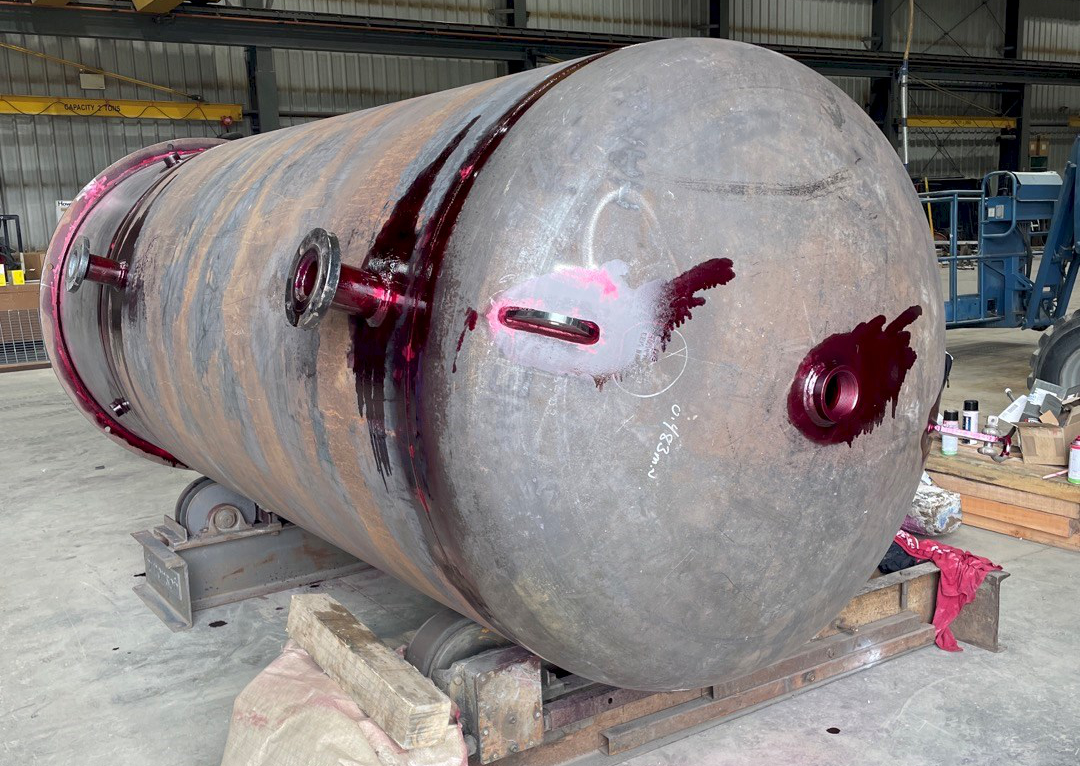Advanced Techniques in Modern Tank Welding Inspection
Advanced Techniques in Modern Tank Welding Inspection
Blog Article
Comprehensive Guide to Effective Container Welding Examination Techniques and Finest Practices for Quality Control
In the world of storage tank welding, extensive assessment techniques are critical for securing structural honesty and guaranteeing compliance with sector guidelines. As we explore these important elements, it becomes clear that an aggressive evaluation technique is not just beneficial, yet essential for operational success in settings dealing with harmful materials.
Relevance of Container Welding Examination

Tank welding inspection acts as a preventative measure, determining potential defects such as fractures, porosity, or incorrect joint penetration before they intensify right into severe problems. Routine inspections not only abide with market guidelines and requirements yet likewise improve the longevity of the tanks, lowering the need for pricey fixings or substitutes.

Visual Evaluation Techniques
Using organized visual inspection methods is vital for assessing the high quality and stability of bonded joints in storage tanks. This technique acts as the initial line of defense in recognizing potential flaws such as splits, damages, and inadequate penetration. The inspector must approach the job with an eager eye, using ideal tools like multiplying glasses, flashlights, and mirrors to enhance presence.
During the assessment process, the inspector should examine the weld account, ensuring it complies with specified requirements and guidelines (Tank Welding Inspection). This consists of taking a look at the grain width, elevation, and blend with the base product. Inspectors must additionally pay attention to the surrounding areas for signs of thermal distortion or contamination that may affect the weld's performance
Paperwork of findings is vital; assessors should record any kind of anomalies, classifying them by seriousness for additional examination. This methodical strategy not only aids in instant defect identification but likewise adds to long-lasting top quality guarantee by ensuring conformity with market standards. Normal training and calibration of visual evaluation strategies further improve the reliability of evaluations, inevitably causing safer and a lot more resilient container frameworks.
Non-Destructive Testing Approaches
Non-destructive screening (NDT) approaches are frequently utilized in storage tank welding examinations to examine the stability of welded joints without endangering their structural honesty. These techniques are essential for identifying flaws such as fractures, spaces, and incorporations that can cause disastrous failures if left unseen.
Typical NDT techniques include ultrasonic screening (UT), which utilizes high-frequency acoustic waves to find inner problems; radiographic testing (RT), employing X-rays or gamma rays to picture weld frameworks; and magnetic particle testing (MT), which reveals surface area and near-surface stoppages in ferromagnetic materials (Tank Welding Inspection). Liquid penetrant testing (PT) is likewise widely used, qualified of detecting surface-breaking defects by applying a fluorescent or shade comparison dye
Each NDT technique has its details applications and advantages, making it essential for inspectors to select the ideal method based on the product and the kind of weld being evaluated. The integration of these NDT approaches right into the evaluation procedure boosts over here the overall quality control structure, ensuring that welded tanks fulfill security and performance standards. Inevitably, NDT plays a crucial function in preserving the stability and durability of container structures in numerous industrial applications.

Paperwork and Coverage
Making certain thorough paperwork and reporting throughout storage tank welding evaluations is crucial for preserving conformity with industry requirements and helping with reliable communication among stakeholders. Proper documentation functions as a detailed record of inspection tasks, findings, and any kind of rehabilitative activities taken throughout the welding procedure. This information is necessary not only for quality control but additionally for audits and governing evaluations.

A well-structured examination report ought to consist of details such as the date of examination, names of inspectors, welding treatments employed, materials used, and any type of deviations from established requirements. Additionally, pictures and representations can boost the clearness of the record, offering visual context to the searchings for. It is likewise crucial to document any kind of non-conformities along with their resolution, ensuring that all stakeholders are notified of prospective dangers and the steps required to mitigate them.
Furthermore, maintaining a centralized data source for all evaluation reports permits simple retrieval and evaluation, cultivating a society of transparency and liability. By prioritizing precise documents and coverage, companies can not just copyright quality control but likewise reinforce their online reputation within the market, eventually resulting in enhanced security and functional effectiveness.
Continuous Improvement Practices
Continuous renovation methods are necessary for enhancing the top quality and effectiveness of storage tank welding evaluations. Applying a systematic method to assess and improve evaluation techniques cultivates a culture of quality Going Here control within the company. One effective strategy involves routine training and upskilling of inspection workers to stay abreast of the most up to date welding technologies and standards. This ensures examiners have the essential understanding and skills to determine flaws properly.
In addition, using data-driven evaluation enables companies to track inspection results, determine trends, and identify areas for renovation. Employing devices such as origin reason analysis can help in comprehending the underlying problems causing defects, making it possible for targeted interventions. Furthermore, obtaining responses from assessment groups and stakeholders produces a collaborative setting description that urges innovative remedies.
Incorporating advanced innovations, such as automatic inspection systems and real-time monitoring, can substantially improve the accuracy and rate of inspections. Normal audits of the assessment processes also add to a culture of liability and continual refinement. Ultimately, these continuous enhancement practices not just elevate the high quality of storage tank welding assessments yet also contribute to total functional excellence and consumer fulfillment.
Conclusion
In verdict, reliable container welding assessment is critical for ensuring the architectural integrity and security of storage space systems, especially those dealing with unsafe products. Utilizing a mix of aesthetic evaluation methods and non-destructive screening techniques helps with the early identification of flaws, thereby preserving conformity with market requirements.
Report this page